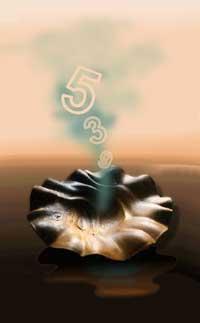When mathematicians came to play...
2001/04/01 Roa Zubia, Guillermo - Elhuyar Zientzia

Despite being a traditional branch of science, street people have judged mathematics in a very strict manner. It is necessary to learn enough to have the accounts controlled, but it seems difficult to value everything that happens. However, there are professionals who easily add the application to each batch of formulas. Thanks to them, tools related to everyday life have been developed. But another area must be highlighted: mathematics for leisure.
Mathematics for leisure... Why not? Don't we do something similar when trying to fill the crossed words? The answer of mathematicians is yes. In addition to the letters, you can play with the numbers. It is surprising the number of strange problems that have been studied in the world of mathematics and the number of headaches without concrete solution.
Palindromes

Interestingly, these games are framed in aesthetics. In the world of algebra and numbers, symmetry in many aesthetics. For this reason, palindromes have long received the attention of mathematicians. And not just them.
In simple children's games palindromes also appear. What are they? It is easy to answer. These are numbers that are read in the same way ahead or behind. For example, the number 3883 is palindromo. The word palindromos is Greek. It means 'running back'. To say the same thing, the word capicua that comes from Catalan is used to express palindromo in Spanish. Cap-i-cua means head and tail. In Basque, the term "head tail" is also included in Plazido Mujika's dictionary to refer to palindromo.

Discarding numbers from a single figure, the smallest palindrome is 11. It is a curious number. The fastest way to multiply by 11 the other number of two figures is to interlace between the two numbers of the number. For example, 11 x 53 = 583 (because 8 is the sum of 5 and 3). When the sum is greater than 10, of course, one must take into account the first figure of what must be interspersed.
In the collections of problems without solution you can find a question related to palindromes. From almost any number an iteration of the type is proposed: to the number you have to add what comes from behind from the reading. According to mathematicians, in most cases with a few iterations the palindromo is obtained. For example, if we start with 58 + 85 we get 143. In the second iteration we would obtain 143 + 341 and obtain 484 results, the palindromo.
Starting with number 89, 24 iterations are needed to obtain the palindromo. But for an unknown reason, beginning with 196, palindromo is not achieved. They believe so. It is not fully demonstrated. Also, no one knows if there is a number that never gives palindromo. From the number 1005499526, for example, with 109 iterations the palindromo is obtained. As calculations have been made, at least about 1900 numbers are known. The first six are 196, 879, 1997, 7059, 10553 and 10563.
Computer running

There are people who have spent time in it. P. C. Leyland, for example, drafted a computer program for the revision of number 196. After 50,000 iterations, it obtained a number of more than 26,000 figures. He found no palindromes.
P. Anderton came with the same result to a number of 70,928 figures. John Walker obtained 1,000,000 figures after 2,415,836 iterations from his computer. Tim Irwin took two months to get a number of 2 million figures. Finally, in May 2000, the Hugariano István Bozsi got 6 million without still getting palindromes. The truth is that the higher the number, the harder it is to get the palindromo number. Is the effort worth it?
Words and phrases
In addition to numbers, words can also be palindromes. For example, 'bear' and 'irri' are some of the easiest words to find in Basque. The decline also allows you to create palindric words. In the verbal form 'zen' the palindromo 'zen' is formed.
But in mathematics for leisure palindric phrases are famous. They are usually very short sentences and often uncoherent semantically, but they are palindric phrases. Long lists of palindromes in Spanish, French, Catalan, English, Italian, German, Dutch, Czech, Suomese and Latin are available online.

The need to decline in Basque makes it especially difficult to complete these types of phrases. However, the lists of palindric phrases are also in Basque. We in the newsroom have composed one of them: Iker, open!
Of course, the palindromo character of phrases is measured without taking into account the spaces between words. With a curious pastime, we want to encourage the reader to complete these types of phrases and send them to our editorial staff. As inspiration read the following palindric phrases:
- Basque: Iker, open!.
- Spanish: Nuria, smile and door to suitcase and Irún.
- French: Un soleil de Sud lie l'os nu.
- Catalan: A soca, a cops is little thing.
- In English: Able was I also saw I Elba.
- Italian: E la turba brutale.
- German: Ein neger mit gazelle zagtim regen nie.
- Nedelandaz: Dood Sire, die eider is dood.
- Czech: Bude zarastovat saze dub.
- Location: Not Turo kenelle nekorut on?
- Latin: Meritis servi sinummunis ivres sitirem.
Published in 7K

Gai honi buruzko eduki gehiago
Elhuyarrek garatutako teknologia






